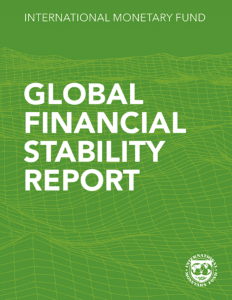WASHINGTON: The private sector must drastically increase its climate-related investments, most crucially in developing countries, for the world to reach net zero carbon by 2050, the International Monetary Fund (IMF) said in a report published Monday. To attain the 2050 goal, $2 trillion would need to be invested annually by 2030, according data from the International Energy Agency (IEA) cited in the report. But this is far above the estimated $400 billion planned for the next seven years, the IMF said.
The report warns that countries, especially ones with emerging or developing economies, will not be able to increase their debt levels by an average of 45-50 percent. “We consider this as fiscally unsustainable,” Ruud de Mooij, deputy director of the IMF’s fiscal affairs department, said in an online press conference. The good news, he said, is that 90 percent of the technologies needed to reduce emissions by 2030 already exist. But to reach sufficient deployment, according to the report, private sector must double its contribution from 40 percent to 80 percent.
The report is part of the fund’s Global Financial Stability Report (GFSR), which will be released in full at the IMF and World Bank’s annual meetings, beginning October 9 in Marrakesh. While some emerging countries, such as China and India, have a well-resourced private sector, this is not the case elsewhere, which means creating the conditions to attract international investment will be necessary, according to the IMF. Fabio Natalucci, deputy director of the IMF, said more work had to be done to improve developing nations’ credit ratings.
He said that about 40 percent of emerging markets are rated sub-investment grade, meaning, for now, “they’re not part of the investable universe.” The projected investment is a fivefold increase from the current $400 billion of climate investments planned over the next seven years, and the majority of the required funding needs to flow into the energy industry, the Washington-based fund said in its report. “We project that growth in public investment, however, will be limited, and that the private sector will therefore need to make a major contribution toward the large climate investment needs for emerging market and developing economies,” IMF economists said in a separate blog post on Monday.
“The private sector will need to supply about 80 per cent of the required investment, and this share rises to 90 per cent when China is excluded.” Insufficient investment into climate mitigation efforts, especially when it comes to increasing renewable energy capacity, has stoked fears that the world – and emerging and developing countries in particular – could fail to achieve its climate goals. The world can still reach the goal of net-zero carbon emissions by 2050 but “bolder action” is required this decade to triple renewable energy capacity, more than double clean energy investment and strengthen international co-operation, the IEA said last month.
The world has to increase clean energy spending to $4.5 trillion per year by the start of the next decade, from the $1.8 trillion expected in 2023, to limit global warming to 1.5°C above pre-industrial levels, the IEA said in its updated Net Zero Roadmap report. Countries also need to triple the global installed renewables energy capacity to 11,000 gigawatts by 2030, the Paris-based agency said. The IEA last month called for an “equitable transition” that takes into account different national circumstances in which advanced economies reach net zero sooner to allow emerging and developing economies more time.—AFP and agencies










